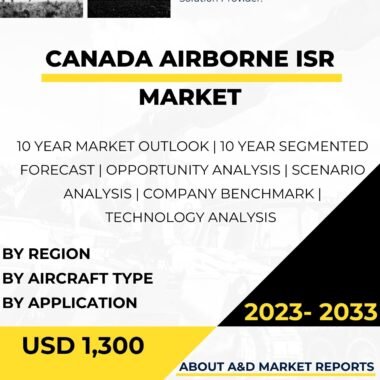Description
Unmanned Aerial Vehicles (UAVs), commonly known as drones, have become a vital component of the United States’ defense strategy, offering numerous advantages in intelligence, surveillance, reconnaissance, and combat operations. The development and deployment of defense UAVs have undergone significant advancements, leading to a diverse range of unmanned systems tailored to specific military requirements. These UAVs have played a critical role in modern warfare, reshaping the nature of military operations and expanding the capabilities of the U.S. military across various domains.
The history of defense UAVs traces back to the early 20th century, with the first use of unmanned aircraft for target practice and aerial reconnaissance. However, it was not until the late 20th and early 21st centuries that UAVs experienced a significant surge in technological advancements and operational integration. Rapid developments in sensor technology, communications, and artificial intelligence have facilitated the evolution of UAVs from simple surveillance platforms to highly sophisticated and autonomous systems.
Defense UAVs can be broadly classified into several categories based on their design, capabilities, and operational roles. The most prevalent categories are reconnaissance UAVs, combat UAVs, strike UAVs, and drone swarms.
Reconnaissance UAVs, also known as surveillance drones, are designed to gather intelligence and provide real-time situational awareness. These UAVs are equipped with various sensors, cameras, and communication systems that enable them to capture high-resolution images, perform video surveillance, and intercept signals intelligence. Reconnaissance UAVs play a crucial role in monitoring hostile territories, conducting border surveillance, and gathering intelligence for military planning and decision-making.
Combat UAVs, also known as armed drones, are designed to conduct offensive operations and engage enemy targets. Armed with precision-guided munitions, combat UAVs offer a lethal and precise strike capability, reducing the need for riskier manned combat missions. These UAVs have been extensively used for targeted killings, counterterrorism operations, and engaging high-value enemy assets. The iconic MQ-9 Reaper and MQ-1 Predator are prominent examples of combat UAVs deployed by the U.S. military.
Strike UAVs, or attack drones, are specifically designed for close air support and ground attack missions. These UAVs excel in providing immediate and precise support to troops on the ground, particularly in urban and complex environments. Armed with air-to-ground missiles and other munitions, strike UAVs offer rapid response and enhanced maneuverability, making them valuable assets in modern warfare scenarios.
Drone swarms represent a relatively recent development in defense UAV technology. These are collections of multiple small UAVs operating in a coordinated and synchronized manner to achieve a common objective. Drone swarms offer advantages in reconnaissance, surveillance, and even offensive operations, as they can overwhelm enemy defenses and distribute tasks effectively among the swarm members. The concept of drone swarms is still evolving, and research and development in this area are ongoing.
The significance of defense UAVs lies in their numerous advantages and capabilities that support the U.S. military in various operational scenarios. The key advantages of UAVs in defense include:
1. Persistent Surveillance: UAVs offer continuous and long-endurance surveillance, allowing military forces to monitor vast areas for extended periods without risking the lives of personnel.
2. Flexibility and Scalability: Defense UAVs come in various sizes and configurations, making them suitable for a wide range of missions, from reconnaissance and intelligence gathering to strike and combat operations. Their modular design allows for customization based on specific mission requirements.
3. Reduced Risk to Personnel: By eliminating the need for manned flights in dangerous or hostile environments, UAVs reduce the risk of injury or loss of life for military personnel.
4. Precision Strike Capability: Combat UAVs equipped with precision-guided munitions offer a highly accurate and effective strike capability, minimizing collateral damage and civilian casualties.
5. Rapid Deployment: UAVs can be quickly deployed to respond to emerging threats or changes in the operational environment, providing a rapid and agile response to dynamic situations.
6. Cost-Effectiveness: Defense UAVs can be more cost-effective than traditional manned aircraft, as they require fewer resources, maintenance, and operational expenses.
7. Intelligence Gathering: UAVs equipped with advanced sensors and surveillance equipment enable military forces to collect valuable intelligence on enemy activities and movements.
The ongoing development and advancement of defense UAVs involve continuous research and investment in various areas. The U.S. Department of Defense collaborates with defense contractors, research institutions, and technology companies to enhance UAV capabilities, address emerging challenges, and drive innovation in drone technology.
Advancements in artificial intelligence and autonomous systems are particularly relevant in the development of UAVs. These technologies enable UAVs to operate with increased autonomy and decision-making capabilities, reducing the need for constant human control and intervention during missions.
Additionally, research focuses on improving the range, endurance, and efficiency of UAV propulsion systems to extend their operational capabilities and reduce logistical requirements.
Challenges in defense UAVs include addressing cybersecurity concerns to safeguard UAVs from potential cyber threats and attacks. Ensuring secure and encrypted communication channels is critical in preventing unauthorized access and data breaches.
Integration with existing military systems and infrastructure is another challenge, as UAVs need to seamlessly communicate and collaborate with other military assets, such as manned aircraft and ground forces.
To address these challenges, the DoD invests in comprehensive testing and evaluation of UAVs to ensure their reliability, effectiveness, and interoperability with other defense systems.
Furthermore, the integration of swarming technologies and autonomous decision-making in drone swarms is an area of ongoing research and development. Coordinating large numbers of UAVs to work together effectively while maintaining individual autonomy requires advanced algorithms and communication protocols.
In conclusion, defense UAVs have become indispensable assets in the U.S. military’s arsenal, offering a wide range of capabilities, including surveillance, reconnaissance, combat, and strike operations. Their versatility, flexibility, and cost-effectiveness have transformed military operations and tactics, shaping the modern landscape of defense strategies. The ongoing research and development in UAV technology aim to enhance their capabilities, autonomy, and integration into the broader defense ecosystem. As UAV technology continues to evolve, defense UAVs will continue to play a pivotal role in maintaining the United States’ military superiority and preparedness in an ever-changing and complex security environment.




